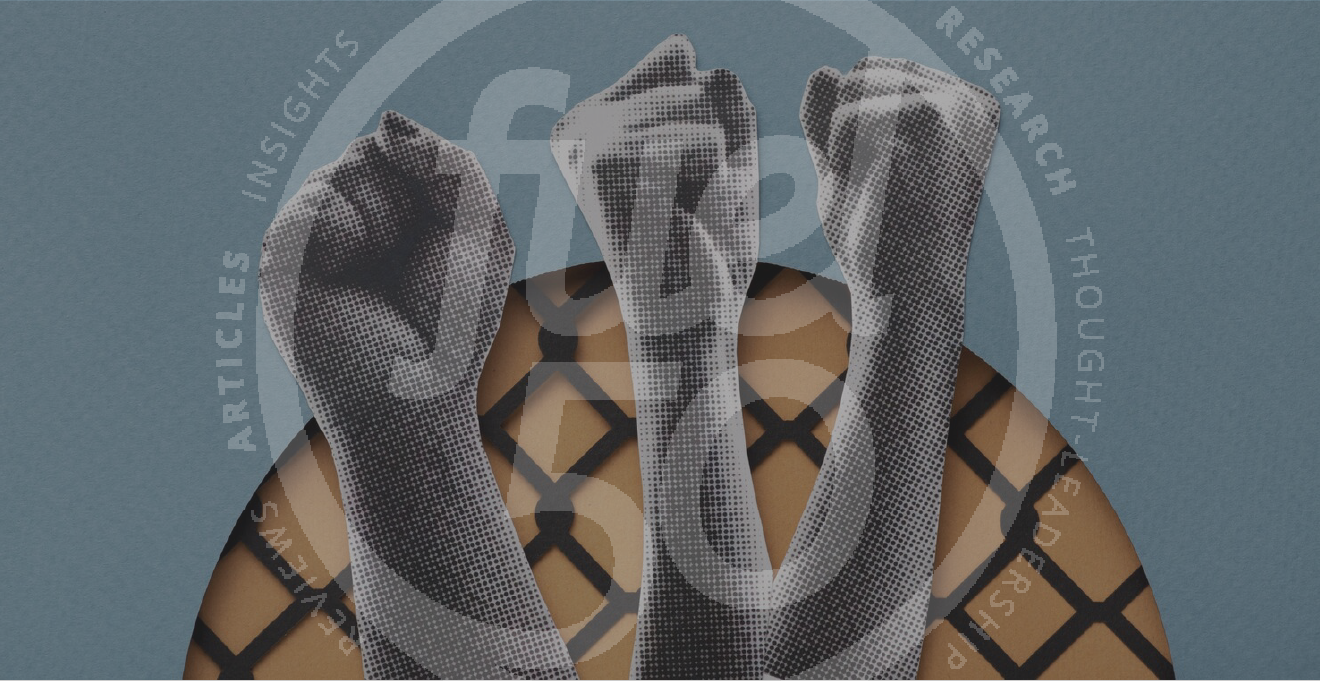Madeline Laurano, founder of Aptitude Research joins us on the show to discuss talent and technology! We dive into the surprising findings from their recent report on ATS and Talent Acquisition where they took a look at the industry, the market trends, what’s driving buying decisions today and provide an in-depth look at some of the providers. Matching and internal mobility were revealed as big themes in the report. Madeline discusses the developments and transitions that are being made within the HR technology space as a response to shifting focus to internal mobility.
The latter half of this episode covers mentoring and why they at Aptitude Research chose to focus on this in their recent survey. Building relationships and loyalty through mentoring programs helps people feel more connected, particularly during a time where many have felt more disconnected than ever. Despite this, Madeline shares that early findings show there’s not a strategic approach within most companies.
Here’s how the conversation went… This interview has been edited and condensed.
Rhonda Taylor: Let’s talk about your recent research on ATS and talent acquisition. How did you come to do this report and what were your high level findings?
Madeline Laurano: Thank you. I’m really excited it’s published, it was a big undertaking. It’s not the first ATS in-depth report I’ve done, at Aptitude alone this is the third time I’ve gone down this path. We really take a look at the industry, the market trends, what’s driving buying decisions today and then provide a really in-depth look at certain providers that meet a criteria for inclusion. That criteria is based on their revenue, the number of customers, what we think they’re bringing to market and if this is a player worth looking at.
It was interesting, this year we have 13 providers in the report and we’ve spent a lot of time on demos, in briefings, with customer interviews, and then put all these profiles together. The overall theme is really that the ATS as a way to track candidates and also as a workflow itself is not enough. Companies need more. They need something to engage with candidates even before they apply and they need a way to engage with talent when they become onboarded. Onboarding is important in both the time, position and then in the HR employee experience.
Where companies really struggle is that there’s all this candidate data in the ATS and they don’t always know how to get access to that. Matching has been a big theme this year in the research report we did. Companies want to think about using AI to match candidates to jobs and job descriptions and the ATS providers are trying to build more capabilities there. It’s this huge system and a huge investment for companies. Every large company has an ATS, but it’s really figuring out how companies can use them correctly, and then also who the best partner is for these companies. It’s not a very commoditized, apples to apples market and it really isn’t, all of these providers are doing really interesting things, but they’re all moving in very different directions.
Rhonda Taylor: Everybody hunkered down in the past year, and went into developmental mode and it’s amazing to see. That’s part of the reason why I’m looking forward to HR Tech, to see the transitions that have occurred with some of the vendors.
Madeline Laurano: The move to internal mobility has been a big theme in the report too. While it’s not necessarily a new trend within talent acquisition, I think when companies feel like hiring is going to slow down or change or stop, they start to think about internal mobility. It’s been a big theme this year for a lot of organizations and the ATS and talent acquisition providers are responding in a major way to say, how can we help companies think about development, think about providing opportunities to the employees, not just to external candidates.
There are some real differentiators with how providers are thinking about internal mobility. Some providers offer something as simple as just posting jobs internally, before you post externally, while others are thinking more strategically, like how can we do things like succession planning, to career development and bring it to that second layer?
Rhonda Taylor: Let’s talk about the HR professional. So the ATS is now addressing talent mobility, who owns it, is it talent acquisition? Or who else could own it?
Madeline Laurano: Or is it owned by HR? Or is it owned by individual business units? How they manage that, to me, is one of the big challenges and it’s a similar challenge with onboarding too. Is this owned by talent acquisition, which is usually where it starts, but who’s responsible for that? Who’s responsible for that employee experience? I don’t think there’s necessarily a one size fits all. I think it’s figuring out for each organization who’s going to be your champion for this, making sure that we have a really strategic and thoughtful approach to internal mobility.
Before companies even look at technology for this, they have to look internally and say, what are we currently doing? What do we want to do? Who’s owning this? Are we doing things differently for executives versus entry level versus management positions, and figure out what that process is? Only then should they start to look at who the providers are. Are we looking at talent acquisition? Are we looking at employee experience? Are we looking at some combination?
Rhonda Taylor: Were there any big surprises when you started taking a look at all the data in your research?
Madeline Laurano: There were a lot of surprises. The first thing that came out is that the providers are all moving in very different directions. Some are looking at employee experience, some are looking at talent management, some are sticking with TA very heavily. That was really interesting to see where everybody’s roadmap is going.
Another thing that really stood out is we really looked at diversity, equity and inclusion which is obviously a big topic in our world today. It’s a huge topic in talent acquisition, and it needs to be a bigger topic than it is today. We really looked at what these providers are doing.
They’re all talking about it, they use it in their marketing messages left and right constantly but when you look at it, we don’t want to just see product capabilities to have AI matching. We want to look beyond that. We really wanted to see what are they doing for their company culture at the providers, are they making changes to their diversity of their leadership teams? Do they have a strategic approach as a company to address Diversity, Equity and Inclusion at their own organization? Then do they offer services if companies are trying to think about improving diversity and starting with talent acquisition? What type of support are they going to get from these providers?
We looked at it in terms of leadership and services, then technology last. Every provider has some kind of technology that reduces bias, or uses AI in some way, not always ethical AI even if they’re messaging that, but there were a lot of differentiators with the leadership, and the diversity and the culture of these providers. Not all of them were taking it as seriously as we would have liked to have seen. There’s only one woman CEO out of the 13 providers in in the report. There was some more diversity than in past years on the leadership team, but I think we still have a long way to go.
Organizations want to do better and they want to look at technology providers that can help support them, but they need to be very careful about looking at providers that truly take it seriously and offer solutions and vision and a strategic approach to it, versus those that are just using it as a marketing message to be able to get customers. I think there’s a real difference there and companies that really, really want to find those partners are going to have to dig deep and see what these providers are doing.
Rhonda Taylor: You’re undertaking a survey on mentorship, care to speak about that?
Madeline Laurano: Absolutely. We do an employee experience survey every year and this year I wanted to think about mentorship. It’s not a topic we’ve really explored in our research and data collection before and I wanted to see what companies were doing and their approach. It’s been very interesting. Not as much of an investment is being made in mentorship as it should. I think companies tend to do it either as a very ad hoc approach, or they don’t think about the mentee perspective versus just the mentor perspective. We asked, ‘how are mentors and mentees even assigned to each other?’ Does that happen just in onboarding as a one-time offer or is that something that’s happening in a very strategic way to be able to make these connections? For most companies, looking at these early findings, it’s not strategic. It’s more ‘we don’t know how they’re assigned’ or ‘we’re just doing it at onboarding’ and that’s it.
Think about just what we’ve all gone through this past year, we feel disconnected, we’re working remotely, we haven’t seen people and we want to feel connected. It’s an organization’s job to help employees feel more connected in this environment. We’re spending eight to however many hours a day in front of our computers working in a very different environment. I think if companies can really think about mentorship and helping individuals, whether that’s starting at onboarding, or whether that’s just through any type of career transition. Helping people feel more connected through a type of mentorship program is very beneficial and it goes a long way to building that loyalty and those relationships.
Rhonda Taylor: It’s been around for a long time but it’s relatively new in regards to growth and development. Traditionally in growth and development, we’ve always thought of sitting down in front of the computer and learning from the LMS. Now, what has also come in to this are gigs and mentorship, especially with the higher level individuals, it’s been really well received. What I’ve discovered is the naivety that’s going on out in the workplace about it around what is the role of the mentor, what is the role of the mentee? There really needs to be clarification. Do you want to speak to those two roles just so people understand?
Madeline Laurano: That’s the challenge, there isn’t clarity around what those two roles are. We have mentors and we have mentees who are the ones being coached or being mentored through this process. But we don’t really establish what the cadence is between them or what the responsibility and roles are and then it’s not valuable. If that’s not established and we don’t understand what we’re going to get from this, and those expectations aren’t being met, companies and individuals are not going to see the value in that.
In the research we looked at corporate social responsibility and volunteerism too, and companies looking at activism as a way to engage employees. How can companies think about this? Interestingly the mentorship component becomes a big part of that as well. For companies that are making these investments in employee experience, to me the mentorship approach is almost a foundational layer and this culture of we support each other and we have a very clear strategic approach to how we do support each other.
It’s interesting to me, as for most companies it’s a big missed opportunity. We know the value, especially after this year, but I think companies need to think more strategically about it. There’s technology solutions that certainly can support that, like I know there’s some great work, you’re doing at Fuel50. It’s certainly an opportunity, and I think for companies that are really committed to their employees, and to providing really meaningful experiences, this has to be part of that.
Rhonda Taylor: Absolutely, because we’re working remote it’s a chance to engage with another employee, that’s worth its weight in gold right now.
Madeline Laurano: And it’s with someone who’s not necessarily your manager. We don’t always feel comfortable going to our managers and saying what’s real to us, what’s scary, and what’s challenging. That’s not always a comfortable relationship, so to be able to have somebody that we look up to at the organization who is not our direct manager I think is tremendously valuable.
Rhonda Taylor: Madeline you are excellent at what you do and you seem to really enjoy it. We honestly believe one needs to enjoy what they do every day in their career. How do you keep yourself operating at such a high level of success?
Madeline Laurano: I feel very, very, very lucky because I have a job that I really love and I try not to take that for granted because I know how many people don’t unfortunately get to experience that. I have a job I truly love, are there hard days – there are. Are there late nights working? Absolutely, but I really love my job and I feel so fortunate to be in an industry that I love too.
I think what certainly has helped me in my career and finding this love of a job is having a really great support team and that’s competitors, those are people that I compete with, those are people that are my clients, those are vendors in the community, those are HR leaders. Having that support system has really made a huge difference. Again especially this year, having people that you can text and reach out to when you’re struggling with something or if something feels challenging is so valuable and I really feel so, so fortunate and I hope I don’t take it for granted at all because I am just, in my opinion, the luckiest person.









